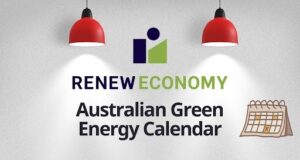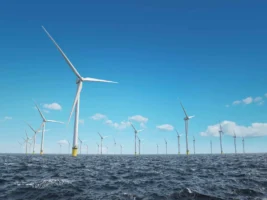The chief rule maker for Australia’s energy markets has outlined its “vision” for a competitive and consumer friendly distributed renewables and battery storage market, with the release of a draft report of its Distribution Market Model and the reforms that might be needed to get there.
The report, published on Wednesday by the Australian Energy Market Commission, paints a picture of what Australia’s future distribution network operation might look like, if “guided by the principles of competitive neutrality and consumer choice.”
More specifically, it investigates how the massive, consumer-led shift to rooftop solar, and now battery storage, might be converted into a win-win – generating benefits from one end of the grid to the other – with the right policy mechanisms and levers in place.
“Distributed energy technologies can provide benefits to consumers, networks and wholesale markets,” said AEMC chairman John Pierce in a statement on Wednesday.
“We need a way to allow consumers and their retail energy service providers to determine where they can get the most value at any point in time.”
To achieve this, the report suggests an “independent ‘optimising’ function” which, when undertaken by “parties other than regulated network businesses,” could help consumers make decisions on the best use of these assets, tapping the multiple value streams that are already, technically, available.
This would allow consumers to get more out of their batteries or solar PV, whether by using the electricity themselves, selling it back to the grid, or tapping the other services distributed energy resources can provide, such as peak load shifting and demand management.
It’s a baby step, and hardly revolutionary – there is already an entire Internet of Things sub-sector dedicated to commercialising such energy “optimising functions” – but it’s a welcome sign that the AEMC is finally getting with the program on key market policy reform.
As ITK analyst and regular RenewEconomy contributor David Leitch has pointed out, as things stand, there is not much of a market:
“50 per cent of the electricity price is driven by monopoly wires and poles regulation, where a price determination for NSW started in 2014 has still not concluded. The other 50 per cent is driven by a vertically integrated oligopoly. Measures of market concentration are increasing. It’s the same in gas.”
Ironically, the glacial pace of change under the AEMC has been highlighted within the new draft report itself, which refers to a 2012 AEMC review which concluded that most consumers were not paying prices that reflected the underlying costs of supplying them with electricity.
“Since 2013, a number of rule changes originating from the Power of choice review have been, or will soon be, implemented,” this week’s report says.
“These include changes to the principles for distribution pricing, new metering frameworks, measures to improve access to consumers’ data, improvements in demand side participation information provided to AEMO, and demand management incentives.”
Four years later, and rooftop solar installations are heading back to heights not seen since 2011-12, with battery storage looking like following suit. But still the regulator seems in no rush, framing its draft conclusions in terms that suggest a distributed energy market of the future, rather than one that is already well underway.
“If, as expected, distributed energy resources continue to become smarter and cheaper, we will see an acceleration in consumer uptake,” Pierce says in his comments on the report. “We need to put consumers in the driving seat – giving them the choice about how to optimise the value of their household’s or business’s energy investments.”
Further recommendations of “changes that may be required” in a distributed energy market include:
- investment in smart IT and communication infrastructure so network businesses can better assess the technical impacts of distributed energy resources on their networks, and other market participants can make better decisions on how to invest in, and operate, distributed energy resources;
- consideration of an appropriate access model for distributed energy resources to use the network, if networks become congested as more resources connect;
- more transparent and standardised technical assessments for connecting distributed energy resources, to avoid onerous requirements which can increase costs, or loose requirements which can create technical issues;
- evolving Australian standards for distributed energy resources so they remain fit-for-purpose.
The Commission intends to publish a final report on this project in August 2017, which it says will draw on stakeholder input on the draft report and, where relevant, set out recommendations on possible ways to address any identified barriers to the development of a market-based approach to the optimisation of distributed energy resources. Submissions on any aspect of the draft report are open until 4 July 2017.












